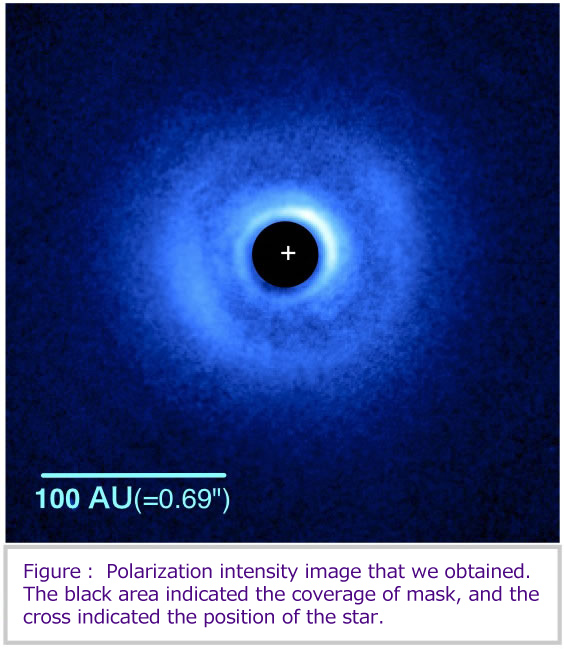Home > Researcher Columns > On-time investigation of the birth of extrasolar planet
On-time investigation of the birth of extrasolar planet
As previously mentioned, an extrasolar planet was discovered for the first time in 1995. Before this, another important factor for the observation of extrasolar planets was being recognized in the mid1980s. It was a protoplanetary disk that is considered the base of the planetary system.
The theory explaining the birth of the solar system had already been established so we were able to recognize the matrix even before the discovery of extrasolar planets. The theory was that the planets including the Earth were formed in the primordial solar nebula which is a disk around the then new-born Sun. Conversely, there were signs of the existence of a disk around many young stars after the mid1980s. The characteristics of the estimated disks were similar to those estimated for the primordial solar nebula. Thus, disks around young stars began to be considered to be the base of a planetary system.
As observation research develops, understanding of protoplanetary disks has become deeper. For example, the initial understanding was only the similarity to the primordial solar nebula, and we found that each disk has a different character. This is considered the origin of the variations that the extrasolar planet system indicates. In retrospect, it could be looked at as a small step when compared to the wide open view of the new discovery of extrasolar planets.

Protoplanetary disk research is opening up like a view during the ascent of a mountain. According to the recent observation of the Subaru Telescope, structures that seem carved like developing planets have been found on disks, one example being on the planet called HD169142**. On the recent infrared photographs taken by the High-Contrast Chronographic Imager for Adaptive Optics ”HiCIAO”, it shows canaliform structures or asymmetrical patterns which are considered developing planets in disks. We can say that these results were obtained not because of luck, but rather due to achieving the line able to catch the moment of the birth of the planet with our observational techniques. (*Refer to the figure below)
Other than HiCIAO, The Atacama Large Millimeter /Sub-millimeter Array "ALMA" which is being constructed in Chile, South America started to be used from last year. By taking advantages of these devices, we catch the details of the formation of the planets in disks to understand the process. Please stay updated.
(Representative Researcher Munetake Momose)
**Click here for the details of "HD169142." For the explanation of the disks for SAO 206462 with the other Subaru telescopes, click here.
